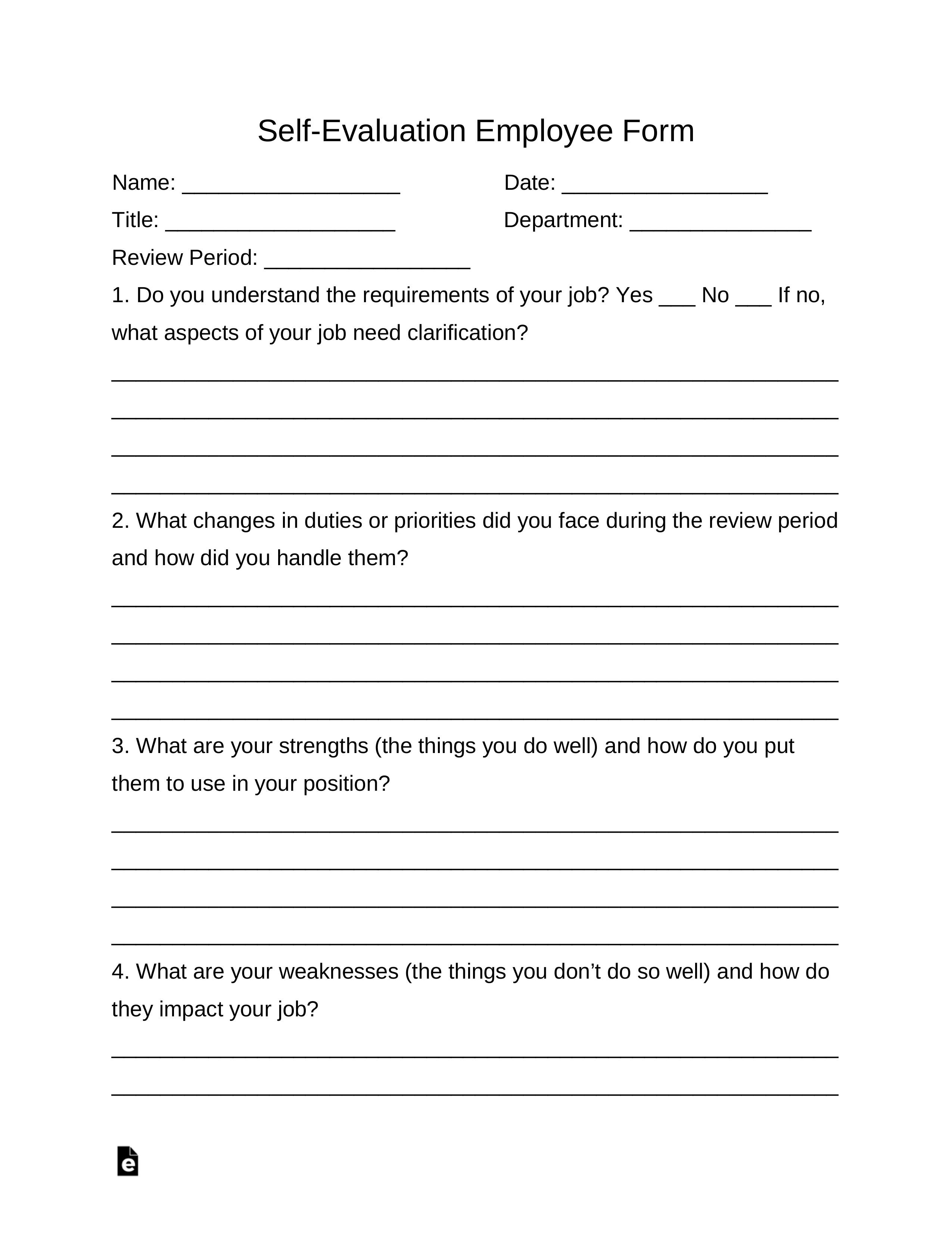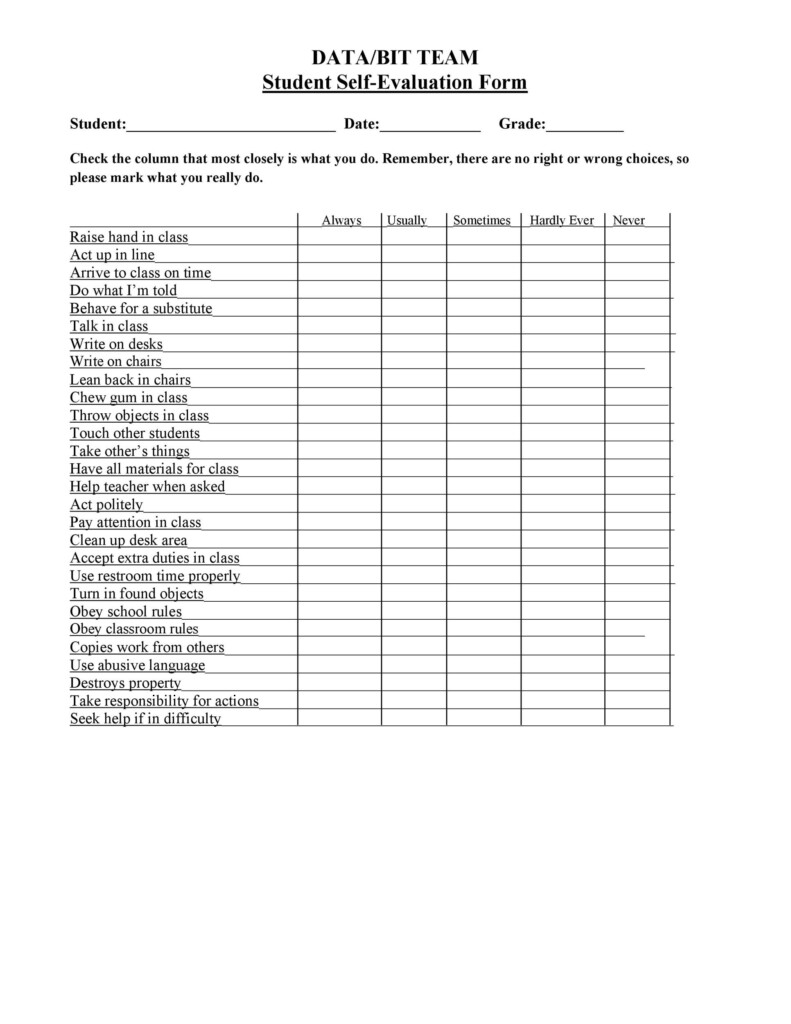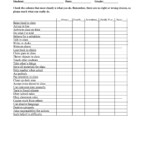Staff Self Evaluation Form Template – Form for employee self-evaluation It can be beneficial in determining your job satisfaction, how your department is managed, or any other crucial elements.
Template for employee self-evaluationEmployees can assess their performance with respect to organizational objectives using self-assessment questionnaires. This assessment offers the chance for continued growth and sheds light on areas of strength and weakness. Nine customizable boxes on the form permit you to document the various accomplishments.
Self-assessment questionnaires are a fantastic way to keep your staff satisfied and happy. You’ll be able to discern patterns and pinpoint areas that require more concentrated. By encouraging self-evaluation, you’ll be able identify any gaps in skills and decide how you can improve your capabilities.
It is important to ask the right questions to your employees. Find out about their future goals and achievements. It is also possible to inquire about their objectives in their work, their professional aspirations and their style of learning in relation to the assessment you have made.
You can make the most of the self-assessment procedure for employees with an appropriate template. One template can be used to ensure the sameness across departments and teams. A single template will allow you to reduce time and assist your supervisors.
The self-assessment templates allow you to assess your performance in relation to your objectives and the requirements of your job. When you’ve completed the form, you’ll get a detailed assessment of your performance.
Your capabilities will be assessed more closely if the potential is high. Furthermore, you’ll be given an opportunity to consider your behavioral, social and leadership capabilities.
Unsatisfaction with your job or the way that the department is run can have a a negative effect on the morale of your business and efficiency. People who aren’t happy are less likely to be productive than their coworkers. There are numerous ways and tools that can aid in reducing stress. One of them is the “Voice of the Employer”, which allows employees to anonymously express their concerns and grievances.
There are a variety of ways you can gauge whether your team is satisfied. There are two primary methods that can help you determine if your employees are happy with their work: polls that are not official and regular surveys. In the event of arranging a private meeting with your employee and having them write an assessment of their present situation, you can also seek the aid of an professional. A more open approach to communication is necessary if your employee is really unhappy with their current position. An employer who is willing to communicate with employees is an excellent one.
Employee happiness is largely determined by their workplace. Unstructured teams or poor managers can result in lower productivity and low satisfaction. These are among the many issues that can occur. This is why it’s vital to ensure that the best candidates are picked for the appropriate positions.
How to offer constructive criticism to your boss. It is crucial to ensure that your input is useful. It’s not helping to provide an excessive amount of negative or false comments.
You might find it enjoyable to give constructive criticism. This could be a great opportunity to encourage your staff and create a more friendly environment.
Be concise when providing feedback. Be sure that your message is future-oriented , not past-oriented.
In addition to the obvious, it’s crucial to be considerate and nonthreatening when expressing your critique. A negative criticism can be misinterpreted. A coworker could think that you’re simply criticizing them. Instead, focus on their strengths and areas to improve.
The ability to provide feedback in real time is one method to ensure its efficacy. This will give you the chance to ask questions, receive clarification, and help gauge the recipient’s response.
You could choose to concentrate on the most notable and appropriate achievement when providing your manager with feedback. You must think about what your boss stands to gain or lose from the contact in order to achieve this.


